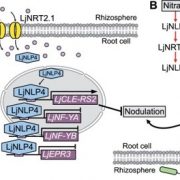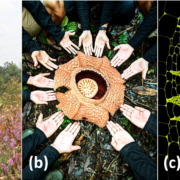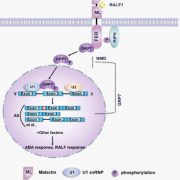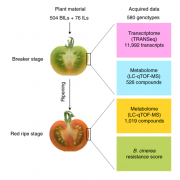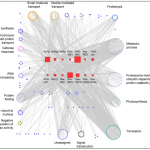Not PTI or ETI: PTI and ETI (Nature)
 Two very exciting papers have come out this week in Nature that address a long-standing question about the relative contributions of two different plant immunity pathways. PTI (pathogen-triggered immunity) recognizes conserved pathogen signatures at the plant cell surface; a model system for PTI is the interaction between the bacteria flagellin protein (or the peptide flg22) and the cell-surface receptor FLS2. ETI (effector-triggered immunity) has been considered a second line of defense. Effectors are pathogen-derived proteins that are introduced into the plant cell, where they interfere with plant defenses. ETI is is the plant’s response to these effectors (or the consequences of the effectors), via NLRs (nucleotide-binding domain, leucine-rich-repeat containing receptors). These two papers, by Ngou et al. and by Yuan et al., ask what happens if ETI is triggered in the absence of PTI. In the first paper, the authors used an estradiol-inducible effector protein to trigger ETI, and in the second the authors used a genetic approach to knock-out the cell surface receptors and co-receptors. Both papers show clearly that neither PTI nor ETI confers immunity alone, but instead the whole is more than the sum of the parts, due to numerous positive interactions between the two systems (“mutual potentiations”). It’s a pleasure to see two complementary approaches that so clearly cement a new paradigm. (Summary by Mary Williams @PlantTeaching) Nature 10.1038/s41586-021-03315-7 and 10.1038/s41586-021-03316-6
Two very exciting papers have come out this week in Nature that address a long-standing question about the relative contributions of two different plant immunity pathways. PTI (pathogen-triggered immunity) recognizes conserved pathogen signatures at the plant cell surface; a model system for PTI is the interaction between the bacteria flagellin protein (or the peptide flg22) and the cell-surface receptor FLS2. ETI (effector-triggered immunity) has been considered a second line of defense. Effectors are pathogen-derived proteins that are introduced into the plant cell, where they interfere with plant defenses. ETI is is the plant’s response to these effectors (or the consequences of the effectors), via NLRs (nucleotide-binding domain, leucine-rich-repeat containing receptors). These two papers, by Ngou et al. and by Yuan et al., ask what happens if ETI is triggered in the absence of PTI. In the first paper, the authors used an estradiol-inducible effector protein to trigger ETI, and in the second the authors used a genetic approach to knock-out the cell surface receptors and co-receptors. Both papers show clearly that neither PTI nor ETI confers immunity alone, but instead the whole is more than the sum of the parts, due to numerous positive interactions between the two systems (“mutual potentiations”). It’s a pleasure to see two complementary approaches that so clearly cement a new paradigm. (Summary by Mary Williams @PlantTeaching) Nature 10.1038/s41586-021-03315-7 and 10.1038/s41586-021-03316-6


